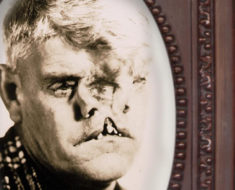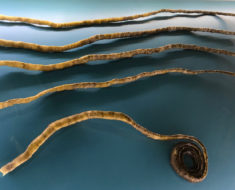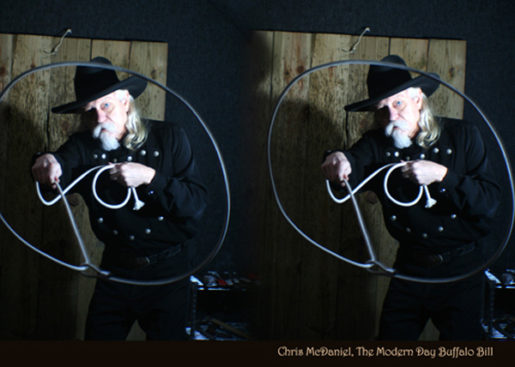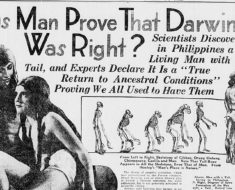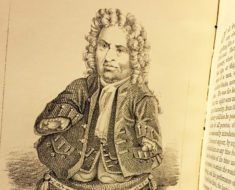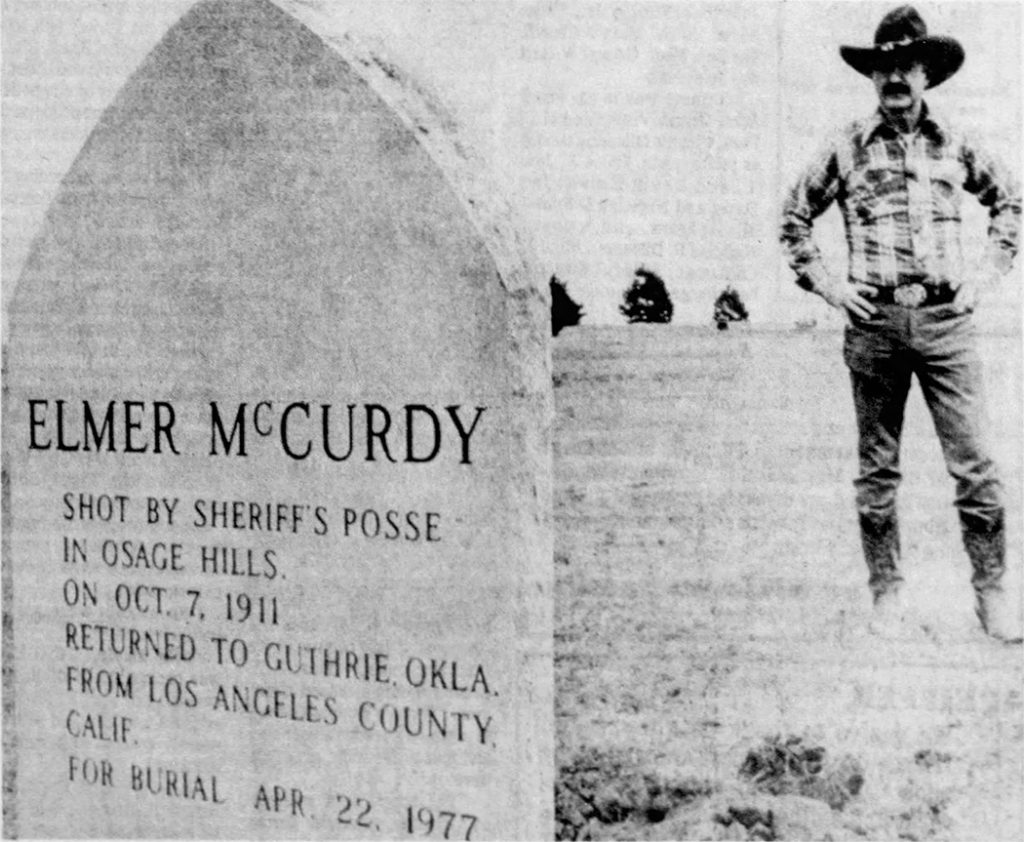
As an outlaw, Elmer McCurdy was no Jesse James or Billy the Kid. But he did manage to become a legend. Not for his robberies though—for his afterlife.
After a stint in the military, McCurdy had turned to crime in the early 1900s, but failed miserably. In a misguided train robbery that netted him all of $46, he ended up getting shot to death by a sheriff’s posse in Oklahoma on October 7, 1911. Since no one immediately claimed McCurdy’s body, an undertaker embalmed him with a hefty amount of arsenic—just in case a family member eventually showed up. No one did. Without pay for his work, the enterprising mortician decided to dress the body and prop him up on display at the funeral home, charging a nickel to see him. The corpse became an instant attraction as “The Bandit Who Wouldn’t Give Up.”
After several years of lucrative display, two sideshow promoters wanted a piece of the action, so they masqueraded as McCurdy’s long-lost brothers and claimed the body. And with that, Elmer hit the road for the second leg of his posthumous career alongside other living and nonliving oddities in sideshows and carnivals.
By the 1930s, McCurdy changed hands again and became the property of producer and director, Louis Sonney. Known for films like Capital Punishment (1925) and Hell-a-Vision (1936), Sonney propped his mummy up in his Museum of Crime wax museum and rented him to the lobbies of theaters to promote sensational films like Narcotic (1933) and Reefer Madness (1936).
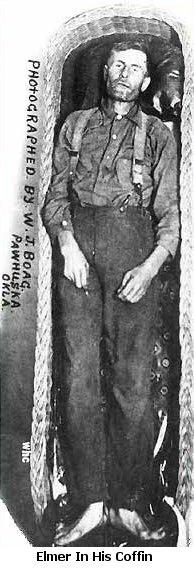
Years later, McCurdy’s adventures would continue at a Long Beach, California, fun house ride called Laff-in-the-Dark. He was painted with luminescent paint and hanged from a noose as a decoration to spook riders. It wasn’t until 1976 when The Six Million Dollar Man was shooting an episode inside the ride that it became clear that McCurdy was a real person and not just a wax dummy. A member of the crew had accidentally broken McCurdy’s arm off, revealing the bone.
Afterward, the body was sent back to Oklahoma, where he’d been shot dead. More than sixty years later, he was finally buried on April 22, 1977. Two feet of concrete sit atop his coffin, ensuring he’ll never travel again.
Though McCurdy’s afterlife has come to an end, his spirit lives on in an even more unexpected way. As revealed on Netflix’s The Toys That Made Us, one of the creators of Mattel’s He-Man and the Masters of the Universe toy line had seen McCurdy at the fun house in his youth and never forgot the sunken face. It was his inspiration for Skeletor.
McCurdy didn’t know it, but that measly $46 he made off with on the day he died bought him eternity.


